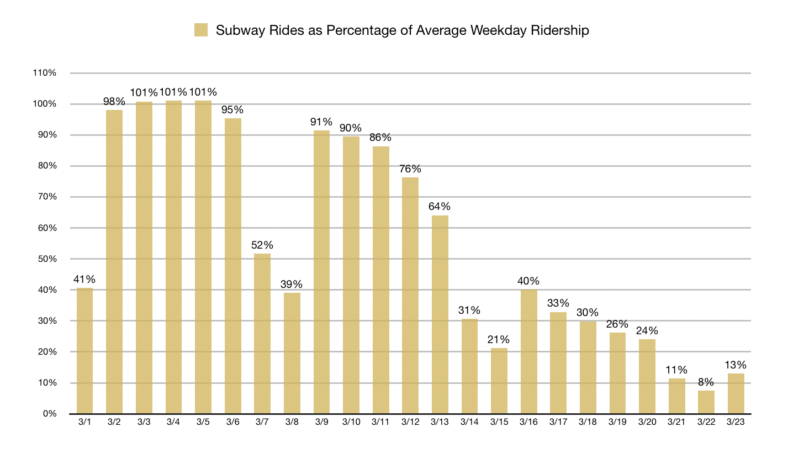Let me return to an issue I discussed a few days ago. When did New York City shut down? It’s more than an academic exercise. It gives us a window into understanding when we can expect the spread of the virus in the city to peak or at least stabilize. That gives other cities a view into what they might in turn expect. A key way to do that is to look at the city’s subway system, which is both a key vector for the spread of the contagion and perhaps the best metric for measuring the city’s activity and mobility.
I obtained the data on daily subway rides from a source in city government for the first 23 days of the month. I used as a benchmark average daily weekday rides from 2018 (5,437,587), the most recent data available on the MTA website. The percentages on this graph are each day’s rides as a percentage of that average.
As you can see by these daily percentages, the city didn’t get close to anything that could be called shut down until the end of the last week of March at the earliest. The first week of March was actually ever so, so slightly above average for three days of the week. Week two declined significantly but was still largely business as usual. It was only in the third week, after the city’s schools were closed and other limited measures took place that the city substantial wound down. And subway ridership only fell below 25% on the last day of the week (3/20).






